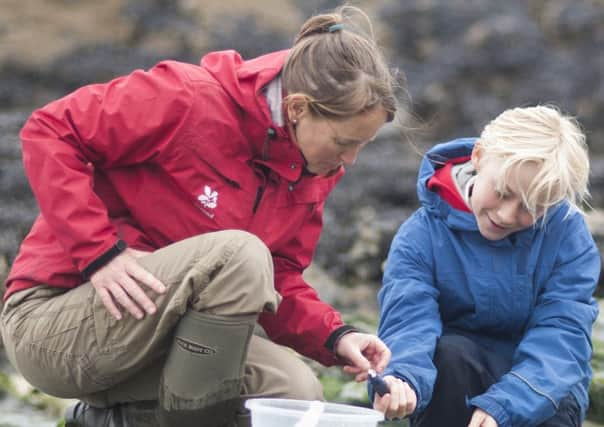Coastal ‘blitz’ to help keep track of UK’s wildlife


Hundreds of members of the public, National Trust rangers and experts will be taking part in a series of “bioblitz” events to record as many species as possible in coastal landscapes from rock pools to sand dunes and heathland, over 12 or 24-hour periods.
The events, as part of the conservation charity’s year-long celebrations to mark 50 years since it launched its Neptune coastline campaign, are being held at 24 sites along the 775 miles of coastline the Trust looks after in England, Wales and Northern Ireland.
Advertisement
Hide AdAdvertisement
Hide AdThey include one 24-hour event at Ravenscar, between Whitby and Scarborough, on August 15, which will see rock-pooling, pond-dipping and surveys of bats and moths.
And one bioblitz will be held at Kinver Edge in Staffordshire, a land-locked site miles from the sea that was once an ancient sand dune, to discover how some coastal wildlife can live away from the coast.
The events will take place at sites ranging from the White Cliffs of Dover on the south coast of England to the Cemlyn Estate, Anglesey, Formby in Merseyside and Murlough Nature Reserve in Northern Ireland, with experts helping the public find and record species of birds, animals, insects and plants.
The National Trust is urging people, who do not need to have any wildlife expertise, to “dress for any weather, bring your sense of curiosity and a packed lunch” for the events, which are taking place over the next six months.
Advertisement
Hide AdAdvertisement
Hide AdDavid Bullock, head of nature conservation for the National Trust, said: “We know that people visit Trust properties on the coast because they are so beautiful.
“But we also know that many would like to get under the skin of what is there; the special plants and animals that call it home.
“Our coastal bioblitzes offer a unique opportunity for experts to tell us more about the wildlife that is on our coasts, and for visitors to learn more about what is in the rock pools and mud, and what can be found flying around at night.”
One bioblitz has already taken place, at Cwm Tydu, Ceredigion, mid Wales, in early April.
Advertisement
Hide AdAdvertisement
Hide AdGwen Potter, area ranger on the National Trust’s Llanerchaeron estate who led the surveying team, said: “The families that joined us foraged in mud, dipped in streams and crawled on rocky shores to help us get great records including the chunky black oil beetle, peregrine falcon and strawberry beadlet anemone.
“One of our experts found a lichen, Roccella phycopsis, at its furthest northern extent, and records like this help to map out species response to climate change.”
She added: “Because we did our bioblitz in April, we found a few firsts for the year - the summer ones may uncover even more stories.”
The National Trust is teaming up with a number of other wildlife organisations on the bioblitzes, including the Wildlife Trusts, Buglife, the Marine Conservation Society and the RSPB.
Advertisement
Hide AdAdvertisement
Hide AdAll discoveries will be submitted to local wildlife record centres and the National Biodiversity Network to help understand how coastal wildlife is changing, and will also help determine how to best conserve each property.
To find out more visit www.nationaltrust.org.uk/bioblitz.